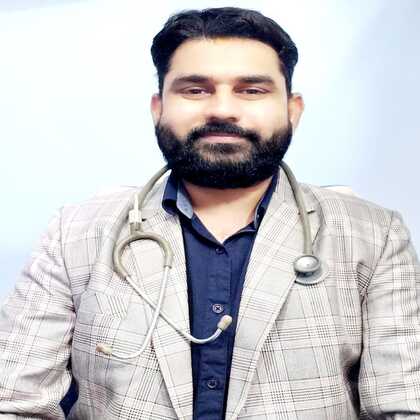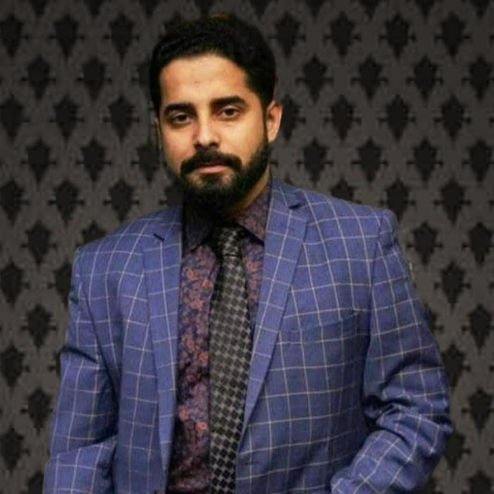All About Dental Braces: Types, Procedure, and Care
Discover everything you need to know about dental braces, including types, treatment steps, maintenance, and aftercare for achieving the perfect smile.

Written by
Last updated on 3rd Jul, 2025
Dental braces are unique dental structures that help correct misaligned teeth and bite irregularities. The need for such orthodontic treatment dates back to ancient Egypt, where metal bands were found on mummies' teeth. Modern orthodontics began in the eighteenth century when French dentist Pierre Fauchard introduced the "bandeau", a metal bar designed to align teeth.
Present-day braces come in different forms and materials: metal, ceramic, and lingual. They can also be in clear aligners, which ensure better treatment possibilities. This guide delves into the types of braces, how they work, the reasons for getting braces, how to maintain them, and why retainers are necessary for maintaining correct alignment.
Types of Dental Braces
Orthodontists use different braces depending on their patient’s lifestyles and budgets. Here are some common types:
Metal Braces
These types, with stainless steel brackets and wires bonded to the surface of the teeth, remain the most popular globally. Due to their sturdiness and economy, they are instrumental in dental conditions that require intricate correction. Although modern metal braces are the most conspicuous, they are much smaller and cause much less discomfort than past ones.
Ceramic Braces
These types are for individuals who prefer to maintain low profiles. The brackets are made of tooth-coloured or clear ceramics. These braces are a little more expensive than metal braces. However, to avoid discolouration, the user must maintain very high hygiene.
Lingual Braces
These braces are the least visible kind. They are cemented to the inner surface of teeth and, therefore, hardly visible from the outside. Though they may impact speaking abilities and take more time to get accustomed to, they have aesthetic benefits for those concerned with appearance.
How Do Braces Work?
Braces operate by applying force to teeth to produce alignment. This process integrates mechanical force with biological modifications of the jawbone's structure.
They are fixed to the teeth with dental adhesive and joined by arch wires that produce force.
This pressure stimulates bone remodelling, where the periodontal ligament resorbs the bone at one end while forming it on the other to move teeth through the jaw.
Treatment progresses through stages: initial alignment for crowding, bite correction, and final positioning.
Orthodontic treatment is based on general and specific assessments, X-ray films, and dental impressions. Orthodontists fix brackets, check and tighten the wires during follow-up sessions, and monitor tooth shifting.
Reasons for Getting Braces
As orthodontic appliances, braces play aesthetic and functional roles during dental treatment.
Cosmetic factors are the main reasons people develop orthodontic concerns.
Straightened teeth are widely believed to enhance the aesthetic beauty of the face, boost self-esteem, reduce social humiliation, and enhance interaction.
Gaps, crowding, or misaligned teeth cause discomfort and reduce confidence in professional settings.
Apart from the aesthetic aspect, braces address critical health issues.
Crooked teeth pose a challenge during flossing and brushing and are likely to develop cavities or gum disease.
Improper bites may lead to jaw aches, headaches, and TMJ problems.
Proper alignment also benefits respiratory patterns, sleep quality, phonation, and articulation.
Timely treatment ensures that severe dental complications do not occur in the future, which could be linked to general health issues.
Procedure for Getting Braces
Oral orthodontic treatment begins with an evaluation, followed by bracket placement, adorning, and maintaining the installed braces.
The treatment process starts with an orthodontic checkup. In orthodontic treatment, the diagnostic assessment of dental structure involves X-rays, photographs, and physical examination.
The evaluation helps identify treatment requirements, the type of braces, the time required, and the fees.
Some patients may need initial dental treatments, including scaling or fillings, before placing braces.
Installation only takes one to two hours. The orthodontist prepares the tooth surfaces for bonding, applies the adhesive, and cements the brackets.
An archwire is then slid through these brackets and tied with elastic ties.
After installation, patients attend adjustment appointments every 4-6 weeks. These visits are essential because the worn elastics and wires are changed to ensure proper teeth tooth movement.
Upon achieving the set orthodontic treatment goals, the orthodontist removes the braces and gives retention directions.
Consult Top Dentist
Duration and Adjustments
The duration of orthodontic treatment depends on the patient's specific dental needs, the kind of brace to be used, and the patient's ability to follow instructions faithfully.
Depending on the situation, treatment takes between one year and three years.
Minor problems with alignment, crowding or spacing usually take 1-1 ½ years of dental treatment.
Complex cases, such as overbites and underbites, typically take 1 ½- 2 years to treat. Large misalignments may take up to three years.
Adjustment appointments are made every 4-10 weeks, depending on the phase of the treatment process, more frequently in the early stages of treatment.
Such sessions include wire changes, elastic replacement, and evaluation of patient progress and usually take about 15-30 minutes.
Care and Maintenance
Taking care of braces prevents rush, especially if the operation is vital for correcting jaw deformities and improving oral health.
Proper oral hygiene involves brushing with a soft brush and fluoride toothpaste after every meal, paying special attention to brackets and wires.
It is recommended to clean between the teeth and underwires using a floss threader or a water flosser at least once daily.
Specific diet changes are essential to safeguard braces. Patients are advised to avoid hard foods like nuts and candies, sticky foods like caramels and gums, and crunchy foods like popcorn kernels and raw vegetables.
Common Challenges and Solutions
Several issues are particular to orthodontic treatment, but they are all addressed, and solutions are obvious to continue the process.
Any braces placement and adjustments in the initial few days may discomfort the wearer. Management consists of over-the-counter drugs such as Paracetamol, warm and salty water rinses, and soft foods.
Orthodontics is recommended for treating instances where brackets are abrasive on the cheeks or lips. Some examples include damaged wires, brittle brackets, and broken elastic rubber bands. To avoid discomfort, the patient should stick to soft foods for the first few days after adjustment.
Aftercare and Retainers
The alignment of teeth after dental braces are removed depends on the patient’s proper care and visits to a dentist.
After removing orthodontic appliances, periodontal maintenance is required to remove accumulated plaque and stains.
Teeth whitening can correct discolouration that may have occurred during treatment.
Brushing, flossing, and dental checkups are essential for overall health.
Patients should gargle after eating foods that may stain the new teeth and ensure good hygiene to enhance the colour of the newly formed teeth.
Retainers are fixed appliances made individually to prevent the teeth from regressing to their original position.
Regular retainer wear, particularly the first few months after the brace removal, is essential to minimise relapse.
If appropriate care is not taken to clean and store the retainers correctly, their functionality and durability may be impaired.
When a retainer is not worn regularly, the teeth may shift back to their original position.
Costs and Insurance
Conclusion
Dental braces are not a small investment in oral health and overall demeanour. Despite significant commitments to treatment procedures, care, and funding, the outcome is satisfactory; many achieve correct occlusion for a lifetime.
Understanding the process, from the initial consultation to the completion of treatment, helps patients make informed decisions about their orthodontic care, leading to the best results.
Consult Top Dentist
Consult Top Dentist

Dr. Anupama Kumari
Dentist
7 Years • BDS, MDS (Conservative Dentistry & Endodontics)
Chhapna
RA Dent Clinic, Chhapna

Dr Pramita Gayen
Dentist
9 Years • BDS
Kolkata
Parkview Dental Clinic, Kolkata

Dr. Prabhala Sudheer
Dentist
11 Years • BDS
Hyderabad
BRIGHT SMILES MEDICARE & DENTAL CARE, Hyderabad

Dr. Gourav Sharma
Dentist
13 Years • BDS
Shivpuri
Dr Gourav Sharma Best Painless Dentist shivpuri, Shivpuri

Dr Santanu Mukherjee
Dentist
12 Years • BDS, MDS Oral Pathology & Microbiology
Kolkata
Dental Clinic, Kolkata
Consult Top Dentist

Dr. Anupama Kumari
Dentist
7 Years • BDS, MDS (Conservative Dentistry & Endodontics)
Chhapna
RA Dent Clinic, Chhapna

Dr Pramita Gayen
Dentist
9 Years • BDS
Kolkata
Parkview Dental Clinic, Kolkata

Dr. Prabhala Sudheer
Dentist
11 Years • BDS
Hyderabad
BRIGHT SMILES MEDICARE & DENTAL CARE, Hyderabad

Dr. Gourav Sharma
Dentist
13 Years • BDS
Shivpuri
Dr Gourav Sharma Best Painless Dentist shivpuri, Shivpuri

Dr Santanu Mukherjee
Dentist
12 Years • BDS, MDS Oral Pathology & Microbiology
Kolkata
Dental Clinic, Kolkata


